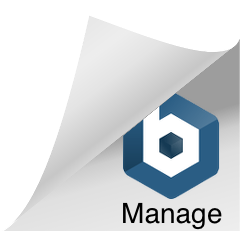Inventory turnover is a key metric that measures how quickly a company sells its inventory over a specific period. A high inventory turnover is desirable because it indicates that a company is efficiently managing its inventory and that its products are in demand. As a wholesaler, you can benefit significantly from higher inventory turns.
An inventory turnover ratio any lower than two could indicate that sales are weak and product demand is waning. This could result in excess inventory on the warehouse shelves and wasted space and resources. And your inventory turnover ratio is a key indicator of just this. Understanding this central metric is the key to optimizing your resources once and for all.
What Should I Do About a Low Inventory Turnover Ratio?
This approach is one of the fastest we have seen to reduce dead stock and increase inventory turnover. Optimizing the inventory turnover ratio can help wholesalers minimize backorders. Backorders occur when a customer orders a product that is out of stock, and the wholesaler cannot fulfill the order immediately. This can help wholesalers minimize the risk of backorders, improve customer satisfaction, and increase sales. Lead time and delivery times are crucial factors affecting inventory turnover. The time it takes for suppliers to deliver products and the time it takes to ship products to customers can significantly impact inventory levels.
Longer lead times mean more time between restocking, which could ultimately lower the turnover rate. You can also use the inventory turnover ratio for business forecasting, to identify market trends, and more. It’s important to track this data and measure it regularly to see how it changes.
- This would mean that your inventory turnover for these specific parts would be 16 (($4 million x 40%) / ($1 million x 10%)) and that these parts turn every 22.81 days.
- For example, Brightpearl’s Inventory Planner allows retailers to create open-to-buy plans in retail, cost, and units.
- To do that, you’ll need to calculate your inventory turnover ratio.
- Average inventory is the average cost of a set of goods during two or more specified time periods.
- In this case, a high inventory ratio and fast stock turnover are both important.
On the other hand, a high inventory turnover rate indicates that a business is effectively managing its inventory and selling products quickly. The inventory turnover how to calculate present value ratio measures a business’s efficiency and how it manages its inventory. A high inventory turnover ratio means a company sells its inventory quickly and efficiently.
How can you calculate your inventory turnover?
An overabundance of low-demand (or no-demand) goods means money down the drain. It’s super-important to calculate your inventory turnover ratio in order to avoid this situation developing. With a well-balanced supply-and-demand chain, your business should be able to stay in the clear. Understanding your inventory turnover is a one-way ticket to increased profitability. This key performance indicator (KPI) is one of the single most important retail growth indicators as increasing your inventory turnover drives profit. Businesses with high inventory turnover enjoy reduced holding costs and can respond with far greater agility to evolving customer demands.
One of the major challenges in achieving higher inventory turns is striking a balance between inventory levels and customer demand. While it is important to maintain sufficient inventory to meet customer demand, overstocking can lead to increased holding costs and the risk of stock obsolescence. On the other hand, understocking can result in stockouts and lost sales. As a wholesaler, managing inventory turnover is critical to the success of your business. Inventory turnover is the number of times inventory is sold and replaced within a given period.
Track Your Inventory Accurately
To do that, you’ll need to calculate your inventory turnover ratio. Depending on your business, that inventory might be final products like pottery or linens, or raw materials like lumber or wool. Either way, you don’t receive revenue until you turn over, or sell, those goods. Your inventory turnover ratio can impact the amount of profit you have flowing through your business and determine whether you’re able to meet the demand for your products.
Using inventory management software is essential to optimizing inventory turnover rates. Inventory management software can help wholesalers to manage inventory levels, automate replenishment processes, and track sales trends. This can help to reduce the risk of overstocking, minimize holding costs, and improve inventory turnover rates. In short, inventory turnover is a performance metric that shows how efficiently a company is selling its stock. A higher inventory turnover rate is generally better, as it indicates that the company is quickly selling off its products and doesn’t have too much unsold inventory sitting around.
Tips for Improving Your Inventory Turnover Ratio
The cost of storing and maintaining inventory can greatly affect the turnover rate. The higher the cost, the more businesses are incentivized to sell items quickly and restock often in order to reduce these expenses. Circuit for Teams can help save time and money on your shipping process. Our routing software can optimize your last-mile delivery — the final stage in the supply chain responsible for getting products into customers’ hands.
It is one of the efficiency ratios measuring how effectively a company uses its assets. Manufacturing encompasses a wide range of industries, and the products manufactured range from cupcakes to jet engines. The ideal inventory turnover ratio for the manufacturing industry highly depends on the specific company’s products and processes. That being said, a good target inventory turnover ratio for manufacturers is often between 5 to 10 times per year. As a seller of physical goods, you must understand how to manage your inventory for your business to keep growing.
Conversely, a lower turnover ratio suggests that you may be carrying excess inventory, leading to increased storage costs and the risk of obsolescence. Startups are always looking for ways to maximize their business potential, and one important way to do this is by tracking inventory turnover. Knowing how quickly products are moving from the shelves allows a business to order the correct quantity of items they need while also determining what customers are purchasing most. Excess inventory (overstocking) is the enemy of profit and efficiency. If you bulk-buy too many items, your inventory turnover ratio is going to suffer. With all the capital tied up in bulk inventory, it could take a very long time to get that money back.
Consider investing in targeted advertising campaigns or promotions to encourage customers to buy more products. A turnover rate of six turns per year doesn’t mean that the stock of every item will turn six times. The stock of popular, fast moving items should turn more often (up to 12 times per year). But do we have to buy the entire $10,000 worth of the product at one time? Then, just before running out of stock, we bought an additional $5,000 worth of the product with part of the revenues received from selling the first shipment. At the end of the year we’ve still sold $10,000 worth of the product, still made $2,500 gross profit, but on an investment of about $5,000.




